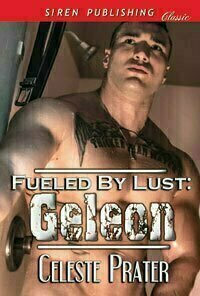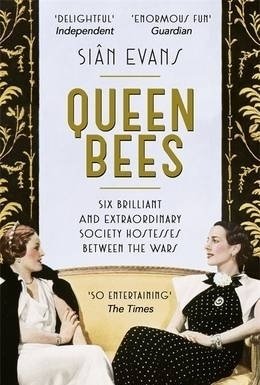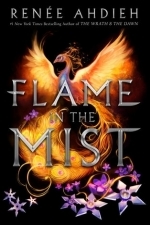Search
Search results
Merissa (13555 KP) rated Ericksen (Gen-Heirs: The Guardians of Sziveria, #5) in Books
Nov 7, 2022
ERICKSEN continues the brilliance that is the Gen-Heirs: The Guardians of Sziveria series. For the first time, our male protagonist is NOT a Gen-Heir, or Shield Guardian, or any of the other ranks. Instead, Vayden is Gen-Common - in other words "normal." Melody, on the other hand, does have a talent - logic-based as far as she has been told. She has been raised to believe Gen-Common people are basically a waste of space, so it was wonderful to see the changes that occur when she realises how wrong she was. Of course, to believe something that fundamental means her upbringing wouldn't be classed as healthy by any stretch of the imagination, and the contrast between her family and Vayden's was so stark, beautiful in the differences.
The overall story arc continues but you don't need to have read any of the previous books to understand this one. I would recommend you read them simply for the amazing stories they are!
The pacing is wonderful, giving you moments of action coupled with moments of silence, vulnerability, and tenderness. There are moments of steam, but that isn't the main focus of the novel.
I loved seeing Melody grow as a person and as a talent. Vayden stole my heart from the start and just compounded it with every sweet and loving moment. This was a fantastic addition to the series and I can't wait for it to continue. Highly recommended by me.
** same worded review will appear elsewhere **
* A copy of this book was provided to me with no requirements for a review. I voluntarily read this book, and the comments here are my honest opinion. *
Merissa
Archaeolibrarian - I Dig Good Books!
The overall story arc continues but you don't need to have read any of the previous books to understand this one. I would recommend you read them simply for the amazing stories they are!
The pacing is wonderful, giving you moments of action coupled with moments of silence, vulnerability, and tenderness. There are moments of steam, but that isn't the main focus of the novel.
I loved seeing Melody grow as a person and as a talent. Vayden stole my heart from the start and just compounded it with every sweet and loving moment. This was a fantastic addition to the series and I can't wait for it to continue. Highly recommended by me.
** same worded review will appear elsewhere **
* A copy of this book was provided to me with no requirements for a review. I voluntarily read this book, and the comments here are my honest opinion. *
Merissa
Archaeolibrarian - I Dig Good Books!
Hazel (2934 KP) rated The Hidden Village (Wartime Holland Book 1) [Audiobook] in Books
Jan 16, 2022
This is an engaging and compelling story of what life was like in a small village in Holland during World War II. It is a fictional story but is based on real events.
There is a palpable sense of tension throughout; you really get a sense of the fear amongst a village population trying to keep their fellow human beings, who just happen to be Jewish and the odd downed airman, safe from the clutches of the Nazis whilst putting their own lives and the lives of their families at significant risk.
The story is told through the eyes of various villages of different ages and of Dutch and Jewish perspectives. This really helps to provide a full picture of what life was like for each of the individuals at this horrendous time; the bravery of them all astounds me. Amongst all this, is a look into "normal" life and the trials and tribulations of trying to survive in occupied and war-torn Holland.
The story moves on at a fairly good pace. I listened to the audio version of this book and realised that I was on tenterhooks all the time knowing that something could happen at any moment but not knowing what. I must applaud the narrator; there are quite a few characters, male and female, young and old, but she did a great job.
If I have one gripe it's that I felt it ended rather suddenly and, I feel, left some things unfinished - maybe there is a Book 2 to come? If so, I would be interested in reading/listening to find out more.
My thanks must go to Bookouture and NetGalley for providing my copy in return for an honest, unbiased and unedited review.
There is a palpable sense of tension throughout; you really get a sense of the fear amongst a village population trying to keep their fellow human beings, who just happen to be Jewish and the odd downed airman, safe from the clutches of the Nazis whilst putting their own lives and the lives of their families at significant risk.
The story is told through the eyes of various villages of different ages and of Dutch and Jewish perspectives. This really helps to provide a full picture of what life was like for each of the individuals at this horrendous time; the bravery of them all astounds me. Amongst all this, is a look into "normal" life and the trials and tribulations of trying to survive in occupied and war-torn Holland.
The story moves on at a fairly good pace. I listened to the audio version of this book and realised that I was on tenterhooks all the time knowing that something could happen at any moment but not knowing what. I must applaud the narrator; there are quite a few characters, male and female, young and old, but she did a great job.
If I have one gripe it's that I felt it ended rather suddenly and, I feel, left some things unfinished - maybe there is a Book 2 to come? If so, I would be interested in reading/listening to find out more.
My thanks must go to Bookouture and NetGalley for providing my copy in return for an honest, unbiased and unedited review.
Lyndsey Gollogly (2893 KP) rated Alpha Champion ( Wolf Protectors book 1) in Books
Aug 31, 2022
157 of 230
Kindle
Alpha Champion ( Wolf Protectors book 1)
By Terry Bolryder
⭐️⭐️⭐️⭐️
🌶🌶
Lily Mason is tired of her father's machinations. Seven years ago he tore her away from the love of her life because he was only half alpha. Now he's holding a tournament where full blooded alphas will fight to claim her. She doesn't want any part of it, but if she runs, her little sister takes her place. Lily's ready to give up on her own happiness, until a familiar face appears amongst the contestants fighting to win her.
Lucas Vale doesn't care that the tournament is for full-alphas only. He's determined to use his brother's name and invitation to make sure that no other male gets close to his mate. He's been looking for Lily for years, ever since her father separated them as teens. But Lucas isn't a lovesick teen anymore. He's a world champion fighter who is ready to kick some alpha trash if it means rescuing the woman he loves.
But he'll have to be careful not to be caught, which is difficult when sparks fly from the moment he sees Lily and her beautiful curves again. Now he'll have to fight his way through full blooded alphas with powerful advantages. But Lucas isn't worried.
He may be half alpha, but he's 100% sure he can do anything for the woman he loves.
I haven’t read a Terry Bolryder for a while and I have missed her books. They do exactly what they promise short but sweet hot shifter stories. These happen to be hot shifter MMA fighters what’s not to love? So you get a short bit enjoyable book about all kinds of shifters!
Kindle
Alpha Champion ( Wolf Protectors book 1)
By Terry Bolryder
⭐️⭐️⭐️⭐️
🌶🌶
Lily Mason is tired of her father's machinations. Seven years ago he tore her away from the love of her life because he was only half alpha. Now he's holding a tournament where full blooded alphas will fight to claim her. She doesn't want any part of it, but if she runs, her little sister takes her place. Lily's ready to give up on her own happiness, until a familiar face appears amongst the contestants fighting to win her.
Lucas Vale doesn't care that the tournament is for full-alphas only. He's determined to use his brother's name and invitation to make sure that no other male gets close to his mate. He's been looking for Lily for years, ever since her father separated them as teens. But Lucas isn't a lovesick teen anymore. He's a world champion fighter who is ready to kick some alpha trash if it means rescuing the woman he loves.
But he'll have to be careful not to be caught, which is difficult when sparks fly from the moment he sees Lily and her beautiful curves again. Now he'll have to fight his way through full blooded alphas with powerful advantages. But Lucas isn't worried.
He may be half alpha, but he's 100% sure he can do anything for the woman he loves.
I haven’t read a Terry Bolryder for a while and I have missed her books. They do exactly what they promise short but sweet hot shifter stories. These happen to be hot shifter MMA fighters what’s not to love? So you get a short bit enjoyable book about all kinds of shifters!

Love's Not Welcome at the Hotel Cairo
Book
Hughie must sell his hotel shares to save his dream. Fabian must persuade him to keep them for same...
Contemporary RomCom MM Romance Slow Burn May to December
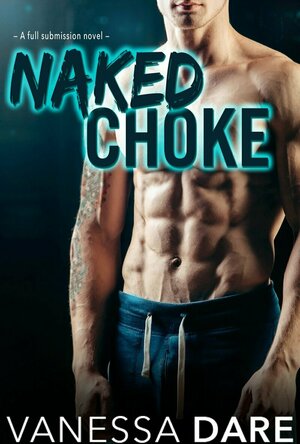
Naked Choke (More Than A Cowboy #1)
Book
Trapped at the bar during her best friend’s engagement party, Emory finds herself with Mr. Dud and...
Contemporary Romance
Merissa (13555 KP) rated Geleon (Fueled By Lust #9) in Books
Dec 17, 2018 (Updated Jun 8, 2023)
Geleon follows the rest of the Fueled by Lust series, in that it is smoking hot, with gorgeous, sexy, alpha males who are also some of the sweetest around, paired up with sassy females full of attitude! Jaelyn leads Geleon on a merry dance, but with Cato on his side (ye gods, I still love that male!!!!) she doesn't stand a chance! Geleon proves that he will do anything to prove to Jaelyn that he is just what she needs.
Geleon receives a shock of his own once Jaelyn's grandmother returns home, plus we find out if 'Ma' is really as senile as she was made out to be. I loved Ma and Eryx, their interaction was wonderful to read, and I really hope I don't have to wait too long for their story.
You see, right here, is the trouble with this series and Celeste Prater! No sooner have you started one book, than you get lost in the story and also find new characters to fall in love with and enjoy, which leads to you wanting the next book immediately!
As for this book, it is full of information that I can't wait to see where it goes or see how the history is intertwined with the present or the future. With action on both sides of the vortex, this is a star in the skies of Insedivertus! This series continues from strength to strength and I love it. Highly recommended.
* A copy of this book was provided to me with no requirements for a review. I voluntarily read this book, and the comments here are my honest opinion. *
Merissa
Archaeolibrarian - I Dig Good Books!
Jun 8, 2016
Geleon receives a shock of his own once Jaelyn's grandmother returns home, plus we find out if 'Ma' is really as senile as she was made out to be. I loved Ma and Eryx, their interaction was wonderful to read, and I really hope I don't have to wait too long for their story.
You see, right here, is the trouble with this series and Celeste Prater! No sooner have you started one book, than you get lost in the story and also find new characters to fall in love with and enjoy, which leads to you wanting the next book immediately!
As for this book, it is full of information that I can't wait to see where it goes or see how the history is intertwined with the present or the future. With action on both sides of the vortex, this is a star in the skies of Insedivertus! This series continues from strength to strength and I love it. Highly recommended.
* A copy of this book was provided to me with no requirements for a review. I voluntarily read this book, and the comments here are my honest opinion. *
Merissa
Archaeolibrarian - I Dig Good Books!
Jun 8, 2016
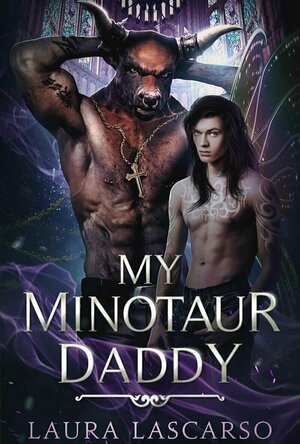
My Minotaur Daddy (Tales of the Arcane #1)
Book
What do you do when a beautiful hot mess walks into your bar? Recently separated from his...
MM Fantasy Romance Daddy / boy
Factually Accurate
I received this book for free through Goodreads First Reads.
A spectacle of celebrity, talent and burning ambition, Queen Bees combines the biographical stories of six ambitious women who helped to shape the standards of British society between the two world wars. Londoner Siân Evans is a cultural historian who has previously worked with the Victoria and Albert Museum, National Trust and Design Museum, and takes great lengths to thoroughly research into her written subject in order to portray a highly accurate insight to the lives of historical figures. Due to the non-existent political status of women in the early 1900s, the women featured in this book are virtually unknown today, yet they had a great impact during the 20s and 30s and helped to shape the Britain of today.
Although not necessarily born into it, circumstances such as marriage meant these six women were regarded as upper class. In no particular order, the names impacting on the social revolution and thus featured in Queen Bees are as follows: Lady Nancy Astor, the first female MP; Lady Sybil Colefax, who became a friend of Edward VIII; Lady Emerald Cunard, also connected with the royal family; Mrs. Ronnie Greville, a rather formidable woman; Lady Edith Londonderry, the founder of the Women’s Legion; and Laura Corrigan, the youngest of the set. Evans talks the reader through these women’s careers as professional hostesses as they compete to throw the better party, entertaining famous writers and actors as well as members of royalty, both national and foreign.
What is perhaps the most interesting, and indeed the most worth learning, is the way a couple of these women altered the future of the British monarchy. Without their interference the future George VI would never have married Elizabeth Bowes-Lyon, and without their involvement in the relationship between Edward VIII and Wallis Simpson, George VI would never have come to the throne. This is such an important aspect of British history that has been widely left out and ignored. Without these hostesses influence we would all be experiencing a slightly different life.
In terms of the actual writing, Siân Evans manages fairly well to engage the reader as she relates the factual story in a more or less chronological way. A slight issue is the quick, often undetected, move from one woman to the next, resulting in a lot of confusion about who is who particularly at the beginning of the book. A lot of the narrative features other key figures from the same period and often moves away from the main characters, which, whilst interesting, is not what the reader necessarily expected from a book whose title Queen Bees suggested it was only going to be about the women’s lives.
Footnotes, quotes and extracts from letters and diaries help to make the book appear reliable, factual and believable. Some of the content, without back up, would have seemed rather fanciful or exaggerated. Queen Bees can be read as a source of entertainment or as a citation for historical research. What is found within these pages is a more unbiased account of the early twentieth century than would be found in numerous male dominated history textbooks.
Mature readers of all ages are likely to gain something from reading Queen Bees – pleasure, knowledge etc., however it is most likely to appeal to the contemporary feminist. With this in mind, be aware that the six hostesses were not feminists of their time; they were not involved in Suffragette movements and were fairly content to live off money earned by their husbands or fathers. Yet, on the other hand, they impacted on the future of Britain as much as the male politicians of the time. Highly political in content, Queen Bees is worth reading to discover our own history, but be prepared for initial confusion over who is who and rather lengthy paragraphs.
A spectacle of celebrity, talent and burning ambition, Queen Bees combines the biographical stories of six ambitious women who helped to shape the standards of British society between the two world wars. Londoner Siân Evans is a cultural historian who has previously worked with the Victoria and Albert Museum, National Trust and Design Museum, and takes great lengths to thoroughly research into her written subject in order to portray a highly accurate insight to the lives of historical figures. Due to the non-existent political status of women in the early 1900s, the women featured in this book are virtually unknown today, yet they had a great impact during the 20s and 30s and helped to shape the Britain of today.
Although not necessarily born into it, circumstances such as marriage meant these six women were regarded as upper class. In no particular order, the names impacting on the social revolution and thus featured in Queen Bees are as follows: Lady Nancy Astor, the first female MP; Lady Sybil Colefax, who became a friend of Edward VIII; Lady Emerald Cunard, also connected with the royal family; Mrs. Ronnie Greville, a rather formidable woman; Lady Edith Londonderry, the founder of the Women’s Legion; and Laura Corrigan, the youngest of the set. Evans talks the reader through these women’s careers as professional hostesses as they compete to throw the better party, entertaining famous writers and actors as well as members of royalty, both national and foreign.
What is perhaps the most interesting, and indeed the most worth learning, is the way a couple of these women altered the future of the British monarchy. Without their interference the future George VI would never have married Elizabeth Bowes-Lyon, and without their involvement in the relationship between Edward VIII and Wallis Simpson, George VI would never have come to the throne. This is such an important aspect of British history that has been widely left out and ignored. Without these hostesses influence we would all be experiencing a slightly different life.
In terms of the actual writing, Siân Evans manages fairly well to engage the reader as she relates the factual story in a more or less chronological way. A slight issue is the quick, often undetected, move from one woman to the next, resulting in a lot of confusion about who is who particularly at the beginning of the book. A lot of the narrative features other key figures from the same period and often moves away from the main characters, which, whilst interesting, is not what the reader necessarily expected from a book whose title Queen Bees suggested it was only going to be about the women’s lives.
Footnotes, quotes and extracts from letters and diaries help to make the book appear reliable, factual and believable. Some of the content, without back up, would have seemed rather fanciful or exaggerated. Queen Bees can be read as a source of entertainment or as a citation for historical research. What is found within these pages is a more unbiased account of the early twentieth century than would be found in numerous male dominated history textbooks.
Mature readers of all ages are likely to gain something from reading Queen Bees – pleasure, knowledge etc., however it is most likely to appeal to the contemporary feminist. With this in mind, be aware that the six hostesses were not feminists of their time; they were not involved in Suffragette movements and were fairly content to live off money earned by their husbands or fathers. Yet, on the other hand, they impacted on the future of Britain as much as the male politicians of the time. Highly political in content, Queen Bees is worth reading to discover our own history, but be prepared for initial confusion over who is who and rather lengthy paragraphs.
Dianne Robbins (1738 KP) rated Lady Killers: Deadly Women Throughout History in Books
Sep 3, 2018
I received an uncorrected proof of a true-crime book about female serial killers by Tori Telfer called Lady Killers: Deadly Women Throughout History to peruse and review on Goodreads and Amazon. The book won’t released until October 10, 2017, by Harper Perennial, and I am so thrilled to be one of the few who get to read it first.
Some of the murderers/murderesses have been discussed on My Favorite Murder by Georgia and Karen but some are brand new to me.
From the back cover:
When you think of serial killers throughout history the names that come to mind are ones like Jack the Ripper, John Wayne Gacy and Ted Bundy but what about Tilly Klimek, Moulay Hassen and Kate Bender? The narrative we’re comfortable with is the one where women are the victims of violent crime, not the perpetrators, in fact, serial killers are thought to be so universally, overwhelmingly male that in 1998, FBI profiler Roy Hazelwood infamously declared in a homicide conference that, “There are no female serial killers.”
Lady Killers, based on the popular online series that appeared on Jezebel and The Hairpin, disputes that claim and offers 14 gruesome examples as evidence. Though largely forgotten by history, female serial killers such as Erzsebet Bathory, Nannie Doss, Mary Ann Cotton, and Darya Nikolayevna Saltykova rival their male counterparts and cunning, cruelty, and appetite for destruction.
Each chapter explores the crimes and history of a different subject and then proceeds to unpack her legacy and her portrayal in the media, as well as the stereotypes and sexist clichés that inevitably surround her. The first book to examine female serial killers through a feminist lens with a witty and dryly humorous tone lady killers dismisses explanations (she was hormonal, she did it for love, a man made her do it) and tired tropes (she was a femme fatale, a black widow, a witch) delving into the complex reality of a female aggression and predation. Featuring 14 illustrations from Dame Darcy, Lady Killers is a blood curdling, insightful, and irresistible journey into the heart of darkness.
Tori Telfer is a full-time freelance writer whose work has appeared in Salon, Vice, Jezebel, The Hairpin, Good Magazine, Bustle, barnesandnoble.com, Chicago Magazine, and elsewhere. She is a Pushcart nominee and the recipient of the Edwin L. Shuman Fiction Award. She has written, directed, and produced independent plays on both Chicago and Los Angeles.
The author’s official website is http://www.toridotgov.com.
The illustrator’s website is http://www.damedarcy.com
Table of Contents
The Blood Countess: Erzsebet Bathory
The Giggling Grandma: Nannie Doss
The Worst Woman on Earth: Lizzie Halliday
Devil in the Shape of a Saint: Elizabeth Ridgeway
Vipers: Raya and Sakina
The Wretched Woman: Mary Ann Cotton
The Tormentor: Darya Nikolayevna Saltykova
Iceberg Anna: Anna Marie Hahn
The Nightingale: Oum-El-Hassen
High Priestess of the Bluebeard Clique: Tillie Klimek
Sorceress of Kilkenny: Alice Kyteler
Beautiful Throat Cutter: Kate Bender
The Angel Makers of Nagyrev
Queen of Poisoners: Marie-Madeleine, the Marquis de Brinvilliers
It looked as if The Angel Makers of Nagyrev wasn’t included in the texts, though it is listed in the contents and notes. However, they are on the pages following the chapter and heading Beautiful Throat Cutter. I had mistakenly thought it wasn't included before. Hopefully, that oversight and will be corrected in the final copy. There were a few punctuation errors in the book and I had intended to leave them in the copy above but allowed Grammarly to correct them without thinking. But that's why they pay the editors the big bucks.
Needless to say, I can’t wait to delve deep in this book and read my little Murderino heart out. I am nearly through the book and will update with a review once I have completed it.
#SSDGM
#Stay Sexy Don't Get Murdered
#myfavoritemurder #murderino #toritelfer #harperperennial #harpercollins #damedarcy
#books #bookstagram #mfmpodcast #georgiahardstark #karenkilgariff #serialkiller #truecrime #murder #killers #ladykiller #ladykillers #serialkillers
Some of the murderers/murderesses have been discussed on My Favorite Murder by Georgia and Karen but some are brand new to me.
From the back cover:
When you think of serial killers throughout history the names that come to mind are ones like Jack the Ripper, John Wayne Gacy and Ted Bundy but what about Tilly Klimek, Moulay Hassen and Kate Bender? The narrative we’re comfortable with is the one where women are the victims of violent crime, not the perpetrators, in fact, serial killers are thought to be so universally, overwhelmingly male that in 1998, FBI profiler Roy Hazelwood infamously declared in a homicide conference that, “There are no female serial killers.”
Lady Killers, based on the popular online series that appeared on Jezebel and The Hairpin, disputes that claim and offers 14 gruesome examples as evidence. Though largely forgotten by history, female serial killers such as Erzsebet Bathory, Nannie Doss, Mary Ann Cotton, and Darya Nikolayevna Saltykova rival their male counterparts and cunning, cruelty, and appetite for destruction.
Each chapter explores the crimes and history of a different subject and then proceeds to unpack her legacy and her portrayal in the media, as well as the stereotypes and sexist clichés that inevitably surround her. The first book to examine female serial killers through a feminist lens with a witty and dryly humorous tone lady killers dismisses explanations (she was hormonal, she did it for love, a man made her do it) and tired tropes (she was a femme fatale, a black widow, a witch) delving into the complex reality of a female aggression and predation. Featuring 14 illustrations from Dame Darcy, Lady Killers is a blood curdling, insightful, and irresistible journey into the heart of darkness.
Tori Telfer is a full-time freelance writer whose work has appeared in Salon, Vice, Jezebel, The Hairpin, Good Magazine, Bustle, barnesandnoble.com, Chicago Magazine, and elsewhere. She is a Pushcart nominee and the recipient of the Edwin L. Shuman Fiction Award. She has written, directed, and produced independent plays on both Chicago and Los Angeles.
The author’s official website is http://www.toridotgov.com.
The illustrator’s website is http://www.damedarcy.com
Table of Contents
The Blood Countess: Erzsebet Bathory
The Giggling Grandma: Nannie Doss
The Worst Woman on Earth: Lizzie Halliday
Devil in the Shape of a Saint: Elizabeth Ridgeway
Vipers: Raya and Sakina
The Wretched Woman: Mary Ann Cotton
The Tormentor: Darya Nikolayevna Saltykova
Iceberg Anna: Anna Marie Hahn
The Nightingale: Oum-El-Hassen
High Priestess of the Bluebeard Clique: Tillie Klimek
Sorceress of Kilkenny: Alice Kyteler
Beautiful Throat Cutter: Kate Bender
The Angel Makers of Nagyrev
Queen of Poisoners: Marie-Madeleine, the Marquis de Brinvilliers
It looked as if The Angel Makers of Nagyrev wasn’t included in the texts, though it is listed in the contents and notes. However, they are on the pages following the chapter and heading Beautiful Throat Cutter. I had mistakenly thought it wasn't included before. Hopefully, that oversight and will be corrected in the final copy. There were a few punctuation errors in the book and I had intended to leave them in the copy above but allowed Grammarly to correct them without thinking. But that's why they pay the editors the big bucks.
Needless to say, I can’t wait to delve deep in this book and read my little Murderino heart out. I am nearly through the book and will update with a review once I have completed it.
#SSDGM
#Stay Sexy Don't Get Murdered
#myfavoritemurder #murderino #toritelfer #harperperennial #harpercollins #damedarcy
#books #bookstagram #mfmpodcast #georgiahardstark #karenkilgariff #serialkiller #truecrime #murder #killers #ladykiller #ladykillers #serialkillers
Hazel (1853 KP) rated Flame in the Mist in Books
Dec 17, 2018
<i>I received this book for free through Goodreads First Reads.</i>
Famed for her highly rated <i>The Wrath & The Dawn</i>, Renée Ahdieh has created a new fantasy world full of original characters. Set in a land similar to the Middle Eastern countries we are familiar with, <i>Flame in the Mist</i> incorporates out-dated ideology, ancient lifestyle with a hint of supernatural, and, of course – it is a Young Adult novel after all – a dash of romance. With an eclectic mix of themes, it is a book without cessation of adventure.
The protagonist, Hattori Mariko, at the mere age of 17, is destined to marry the son of the Emperor’s favourite concubine, Prince Raidan. The book commences with the journey from her home, however, Mariko never makes it to the city. Ambushed and presumed dead, Mariko is alone in the dangerous forest, at risk of being discovered by the infamous Black Clan. Instead of waiting for rescue, Mariko, fed up of women being treated as inferior to men, decides she does not want to go home, nor does she want to marry the prince. Her only remaining option is to locate the Black Clan and discover who attempted to murder her. But for this to work, she needs to convince everyone she is a boy.
Whilst Mariko is worming her way into the clan, her twin brother is determined to track down and rescue his sister. Unbeknownst to him, Mariko is beginning to feel more affiliated with their enemies than with her own family. And so a dilemma arises. Does Mariko betray her new “friends” or be unfaithful to the brother she loves?
<i>Flame in the Mist</i> is not only about Mariko’s predicament; it also concerns an age-old feud between powerful families, involving the wrongful death of a disgraced Samurai. As the younger generation reach maturity, they determine to avenge the deaths of their fathers, and, without knowing, Mariko ends up in the centre of two warring parties.
It is a little difficult to get into the story initially; many characters are introduced, but their significance is not obvious for some time. To add to the confusion, vital persons are only formally presented at the end of the novel, which finishes on a cliffhanger. The similarity of the foreign sounding names also creates uncertainty.
Ahdieh cleverly includes a problematic situation that our own world has (almost) overcome. Mariko represents the female population, a gender that is believed to be inferior to their male counterparts. Controlled by fathers, husbands, and powerful leaders, women do not have the opportunity to make their own decisions about their lives. Although it is disconcerting that someone wishes to take Mariko’s life, the ambush provides her with the freedom and chance to prove women are as capable as men. Sadly, she has to pretend to be a boy in order to do this.
It was inevitable that there would be a love interest in <i>Flame in the Mist</i>, however, it is not as inspiring as readers may hope for. The attraction between Mariko and a member of the Black Clan almost comes out of nowhere. Not only was Mariko believed to be male for a wide stretch of the novel, the character in question was one of the more abusive.
<i>Flame in the Mist</i> being the first novel I have read by Renée Ahdieh, I have nothing with which to compare it or state why it is readers particularly admire her writing. The story was mediocre at best, with very little characters that garner respect. Having been published less than a month ago, there is already a lot of hype surrounding this book – either I am missing something vital, or readers are going to be disappointed.
Famed for her highly rated <i>The Wrath & The Dawn</i>, Renée Ahdieh has created a new fantasy world full of original characters. Set in a land similar to the Middle Eastern countries we are familiar with, <i>Flame in the Mist</i> incorporates out-dated ideology, ancient lifestyle with a hint of supernatural, and, of course – it is a Young Adult novel after all – a dash of romance. With an eclectic mix of themes, it is a book without cessation of adventure.
The protagonist, Hattori Mariko, at the mere age of 17, is destined to marry the son of the Emperor’s favourite concubine, Prince Raidan. The book commences with the journey from her home, however, Mariko never makes it to the city. Ambushed and presumed dead, Mariko is alone in the dangerous forest, at risk of being discovered by the infamous Black Clan. Instead of waiting for rescue, Mariko, fed up of women being treated as inferior to men, decides she does not want to go home, nor does she want to marry the prince. Her only remaining option is to locate the Black Clan and discover who attempted to murder her. But for this to work, she needs to convince everyone she is a boy.
Whilst Mariko is worming her way into the clan, her twin brother is determined to track down and rescue his sister. Unbeknownst to him, Mariko is beginning to feel more affiliated with their enemies than with her own family. And so a dilemma arises. Does Mariko betray her new “friends” or be unfaithful to the brother she loves?
<i>Flame in the Mist</i> is not only about Mariko’s predicament; it also concerns an age-old feud between powerful families, involving the wrongful death of a disgraced Samurai. As the younger generation reach maturity, they determine to avenge the deaths of their fathers, and, without knowing, Mariko ends up in the centre of two warring parties.
It is a little difficult to get into the story initially; many characters are introduced, but their significance is not obvious for some time. To add to the confusion, vital persons are only formally presented at the end of the novel, which finishes on a cliffhanger. The similarity of the foreign sounding names also creates uncertainty.
Ahdieh cleverly includes a problematic situation that our own world has (almost) overcome. Mariko represents the female population, a gender that is believed to be inferior to their male counterparts. Controlled by fathers, husbands, and powerful leaders, women do not have the opportunity to make their own decisions about their lives. Although it is disconcerting that someone wishes to take Mariko’s life, the ambush provides her with the freedom and chance to prove women are as capable as men. Sadly, she has to pretend to be a boy in order to do this.
It was inevitable that there would be a love interest in <i>Flame in the Mist</i>, however, it is not as inspiring as readers may hope for. The attraction between Mariko and a member of the Black Clan almost comes out of nowhere. Not only was Mariko believed to be male for a wide stretch of the novel, the character in question was one of the more abusive.
<i>Flame in the Mist</i> being the first novel I have read by Renée Ahdieh, I have nothing with which to compare it or state why it is readers particularly admire her writing. The story was mediocre at best, with very little characters that garner respect. Having been published less than a month ago, there is already a lot of hype surrounding this book – either I am missing something vital, or readers are going to be disappointed.

![The Hidden Village (Wartime Holland Book 1) [Audiobook]](/uploads/profile_image/0c0/c99b7ae5-3878-4d10-b5f0-d71634e510c0.jpg?m=1642341418)

